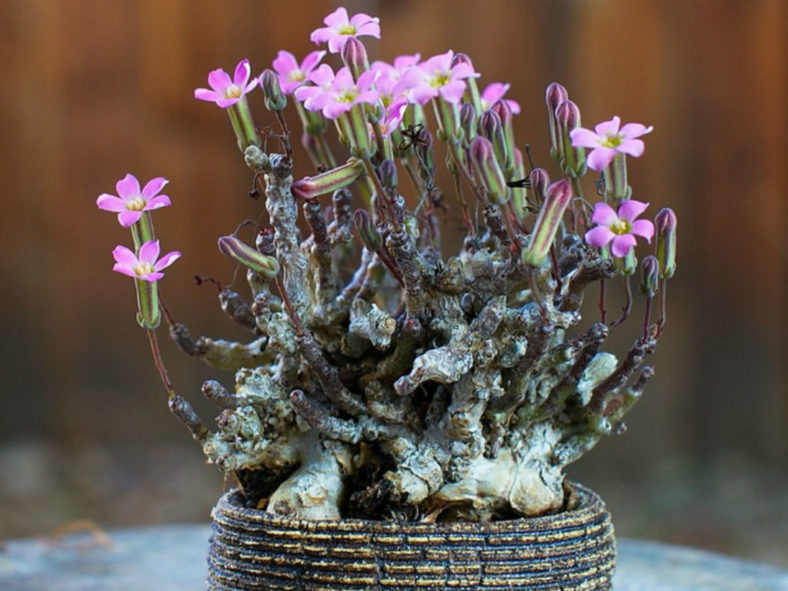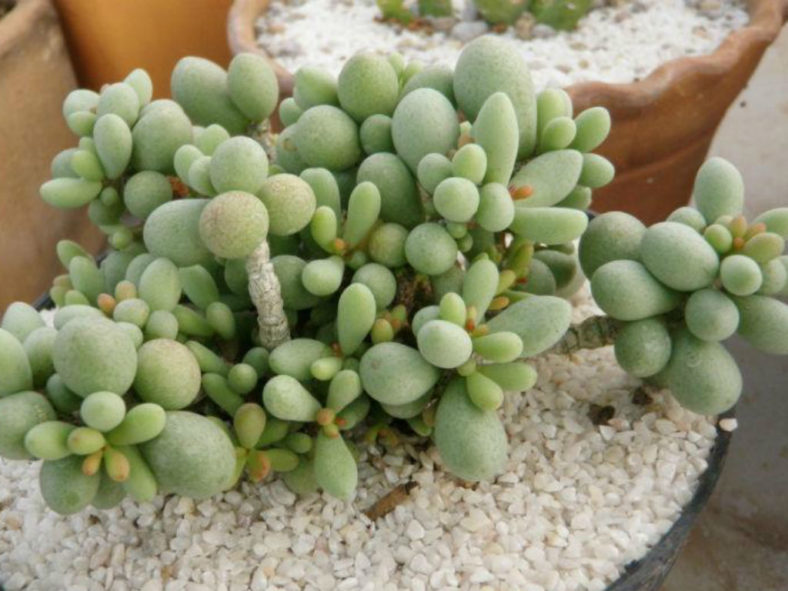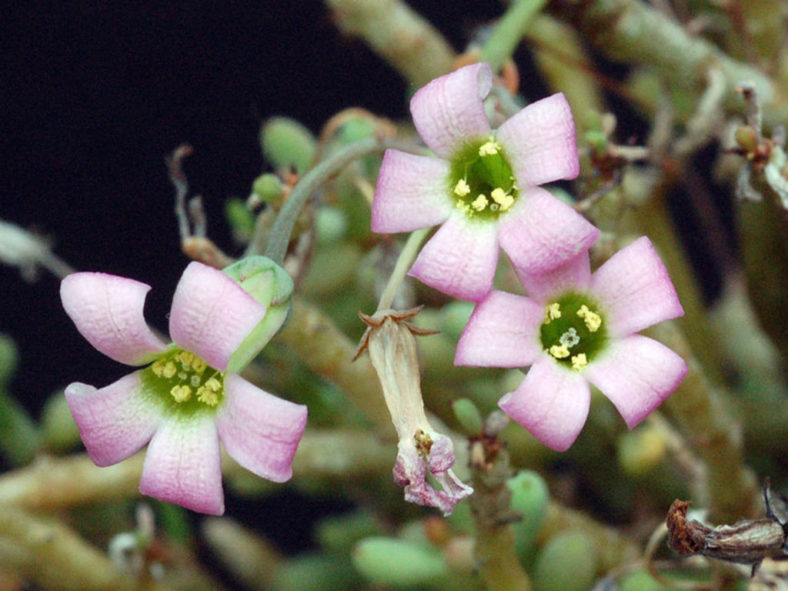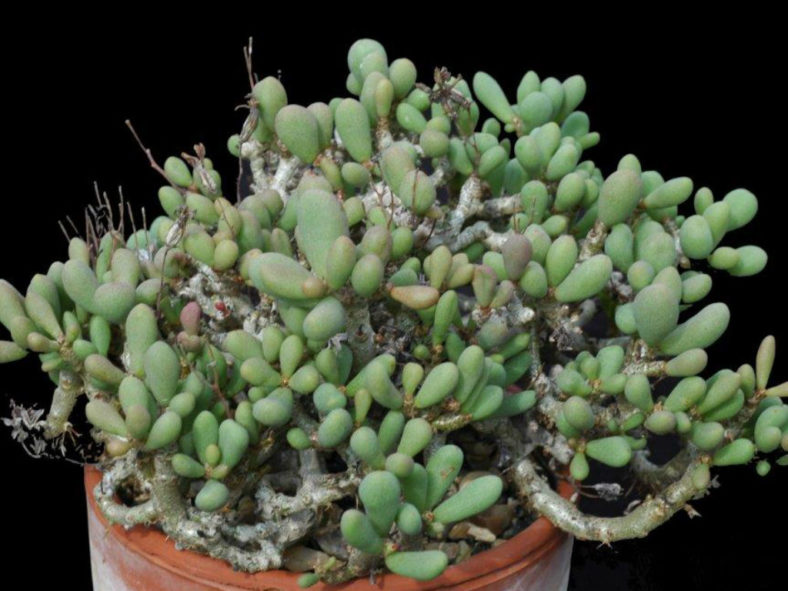Scientific Name
Tylecodon schaeferianus (Dinter) H. Tölken
Synonym(s)
Adromischus schaeferianus, Cotyledon schaeferiana
Scientific Classification
Family: Crassulaceae
Subfamily: Kalanchoideae
Genus: Tylecodon
Etymology
The specific epithet "schaeferianus (shae-fer-ee-AY-nus)" honors Dr. Fritz Schäfer (1881-1930), a doctor and amateur botanist in German South-West Africa or present-day Namibia.
Origin
Tylecodon schaeferianus is native to South Africa (Nothern Cape) and southwestern Namibia.
Description
Tylecodon schaeferianus is a small, highly branched succulent that often forms tufted mounds of gnarled stems and tubers. It can grow up to 2.8 inches (7 cm) tall and 4 inches (10 cm) in diameter. The leaves are small, green, and egg-shaped, measuring up to 0.6 inches (1.5 cm) long and 0.5 inches (1.3 cm) in diameter.
The pink or white flowers appear in late summer after the plant loses its leaves.

How to Grow and Care for Tylecodon schaeferianus
Soil: A well-draining soil mix is the key to healthy Tylecodon. Poor drainage and overwatering most commonly cause root rot in both indoor and outdoor plants.
Light: Tylecodons can survive direct sunlight exposure without problems, but they will grow beautifully in shadow.
Hardiness: Tylecodon schaeferianus can withstand temperatures as low as 30 to 50 °F (-1.1 to 10 °C), USDA hardiness zones 10a to 11b.
Watering: As winter is the growing season, Tylecodons require careful watering from winter until the spring. Get the soil wet, and then wait until it is dry before watering again. In the summer, reduce watering to once per month.
Fertilizing: Use liquid fertilizer for cacti and other succulents in winter.
Repotting: You do not need to repot these plants often. You can do it when the container becomes too small or shallow.
Propagation: Tylecodons can be cultivated either by seed or by cuttings.
Learn more at How to Grow and Care for Tylecodon.
Toxicity of Tylecodon schaeferianus
Tylecodon species are adapted to avoid animal predation being poisonous. Therefore, keep them away from children, pets, and livestock.
Links
- Back to genus Tylecodon
- Succupedia: Browse succulents by Scientific Name, Common Name, Genus, Family, USDA Hardiness Zone, Origin, or cacti by Genus
Photo Gallery
Click on a photo to see a larger version.



